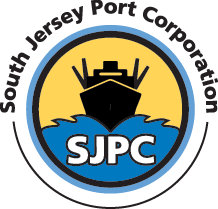“South Jersey Port Corporation (SJPC) has been a great business partner for us for many, many years,” said Peter Svensson, senior vice president and head of Clipper America said, reflecting on the millions of tons of steel that his ships have moved over three decades through the SJPC’s Balzano Marine Terminal in Camden and the record tonnage projected through 2023.
“Although South Jersey Ports is a state organization, they manage and run it as a private company,” Svensson explained. “They are great partners. The key for us is having adequate docking and adequate warehousing space so we can move our cargo as efficiently as possible. And most importantly, so our ships aren’t unnecessarily burning money moored at the dock waiting to move cargo. Time is money. And SJPC has consistently delivered for us.”
Customer service and satisfaction is the operating imperative of the team at SJPC which is led by their Executive Director and CEO, Andy Saporito. “It’s personal to us because our customers, like Peter, are personal to us,” Saporito explained. “We all have our bottom lines. A ship unloading at the dock is costing Peter and his company upwards of $35,000 a day. That is factored into the rate he charges his customer. If that ship is idle at the dock, the increase in cost is something that comes out of our customer’s pocket and it is our job to ensure our terminal is the best option.”
South Jersey Port is committed to earning the trust and business of its partners like Peter at Clipper America. “We earn that trust by being a solid, dependable partner who focuses on our customers’ needs,” said Brendan Dugan, Assistant Executive Director/Director of Business Development for SJPC. “Our team here proactively works to mitigate any obstacles to our mutual success. SJPC is expert in the handling of high-value, high-quality cargo like the coiled steel and tin plate that Clipper America entrusts to us.”
That commitment and expertise is paying dividends with SJPC eclipsing Houston as Clipper America’s top American port of call.
“In the old days, our first port of call in the United States from Antwerp would be New Haven/New London Connecticut and we’d sail down to Camden offload 15,000 to 17,000 tons and then go to Savannah, Houston, and the Gulf ports,” Svensson explained. “Now our ships go directly from Antwerp to Camden and we’re delivering full shiploads, with upward of 30,000 tons. This year is probably our strongest year ever in Camden, probably around 400,000 tons and we project that will last another two years into 2023.”
COVID and the tariffs on imported steel had a devastating impact on shipping and the global supply chain. “March and April of 2020 weren’t the end of the business, but it was pretty gray and dark,” Svensson observed. “When Summer came, shipping went up and stayed that way from much of the second half of 2021. Q1 of 2021 “took off like a space shuttle to Mars and it is still going strong. A year ago, in February of 2020, you could get a ship for $5,000 to $6,000 a day. Today, you’re lucky to get it for $34,000 to $35,000 a day.”
The disruption to the supply chain won’t be fixed soon. Millions of empty cargo containers need to be relocated to exporters, warehouses are clogged with cargo because there are not enough trucks and rail to move it, or the workers to do the work.
Fortunately, SJPC has the available warehousing, trucking, rail, and workers to get the job done and has become the default port for coil steel and tinplate imports for manufacturers in the mid-west and along the Great Lakes.
“Camden is a funny beast,” Svensson explained. “It has two seasons for the steel that is destined for manufacturers on the Great Lakes. When the Saint Lawrence Seaway is closed from December to April, Camden is booming. Typically, when the weather improves, the Saint Lawrence Seaway reopens, and we see a decline in volume in Camden. But that is not the case this year. We’re into August with the Saint Lawrence Seaway fully opened and we’re moving full ships with 27,000 tons of steel coil directly to Camden.”



